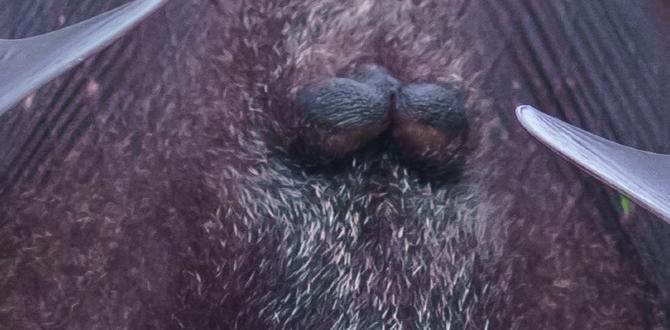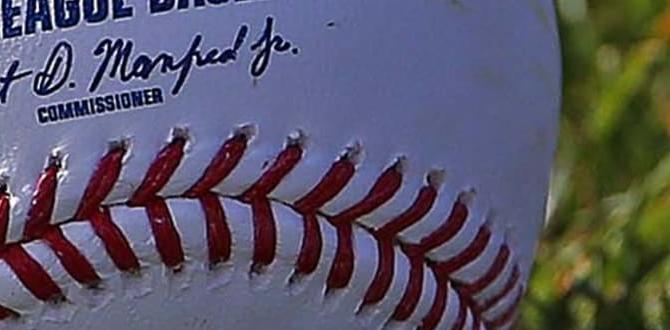Need help finding the right Force3 catchers mask size? This guide breaks down how to measure your head and select the perfect fit for ultimate protection and comfort behind the plate, ensuring you can play your best game.
Force3 Catchers Mask Sizing Guide: Essential Fit for Every Player
Finding the right catcher’s mask is super important for safety and feeling confident. If your mask is too big, it can slip and block your vision. If it’s too small, it might be uncomfortable or not offer enough protection. We know picking the right gear can feel a bit tricky, especially with all the options out there. But don’t worry! This guide is here to make choosing your Force3 catchers mask simple. We’ll walk you through exactly how to get the right size, so you can focus on your game, not your gear. Let’s get started on finding that perfect, secure fit!
Why the Right Fit Matters for Your Force3 Catcher’s Mask
As a catcher, your mask is your first line of defense. A properly fitting Force3 mask isn’t just about comfort; it’s a critical piece of safety equipment. When a mask fits correctly, it stays in place through every squat, throw, and foul ball. This means it can absorb impact effectively, protecting your face, head, and brain. A loose mask can shift on impact, exposing vulnerable areas or hindering your ability to see the ball. Conversely, a mask that’s too tight can cause headaches and discomfort, distracting you from your performance. For young players, getting the fit right from the start builds good habits and ensures they feel safe and supported behind the plate.
Measuring for Your Force3 Catcher’s Mask: A Step-by-Step Guide
Getting accurate measurements is the key to a great fit. You don’t need any fancy tools, just a flexible measuring tape and a little patience. We’ll guide you through measuring the two most important areas: circumference and bridge placement. This ensures your Force3 mask will feel like it was made just for you.
Step 1: Measure Your Head Circumference
This is the most crucial measurement for determining the general size of your mask. It helps us find the right range for your head size. Follow these steps:
- Gather your tools: You’ll need a soft, flexible measuring tape (like one used for sewing) and a mirror, or a friend to help.
- Find the widest part of your head: Imagine a line that goes around your head, about an inch above your eyebrows and ears. This is usually the widest part.
- Wrap the tape: Place the end of the measuring tape on your forehead, just above your eyebrow. Wrap the tape around your head, keeping it level and snug, but not tight. Make sure it goes over the fullest part of the back of your head.
- Read the measurement: Note the number where the tape overlaps. If you’re using inches, round to the nearest half or quarter inch. If using centimeters, round to the nearest centimeter.
- Double-check: It’s always a good idea to measure twice to ensure accuracy.
Step 2: Measure the Bridge of Your Nose
This measurement helps determine how the mask will sit on your face and is especially important for ensuring the cage doesn’t press too hard or sit too high. This is less about a full circumference and more about understanding your facial structure.
- Locate the bridge: This is the area between your eyes where the top of your nose begins its slope.
- Measure the width: Using your flexible tape measure, find the distance between the outside edges of your eye sockets, across the top of your nose. Think of it as the space your nose occupies between your eyes.
- Record the measurement: Note this width. While less critical than the circumference for the initial size selection, it helps confirm the mask’s internal fit will be comfortable, especially with different mask cage designs.
Step 3: Consult the Force3 Sizing Chart
Once you have your measurements, it’s time to find your size on the official Force3 chart. Force3 is known for its innovative mask design that offers superior vision and protection, but getting the size right is paramount. Force3 masks are designed to be snug to provide maximum stability and protection.
Here is a general guide based on common head circumference measurements. Always refer to the most current Force3 sizing chart for the most accurate information.
| Measurement (Inches) | Measurement (Centimeters) | Recommended Force3 Size |
|---|---|---|
| 21.5″ – 22.5″ | 54.6 cm – 57.1 cm | Youth / Small |
| 22.5″ – 23.5″ | 57.1 cm – 59.7 cm | Intermediate / Medium |
| 23.5″ – 24.5″ | 59.7 cm – 62.2 cm | Adult / Large |
| 24.5″ + | 62.2 cm + | Adult XL / Custom |
It’s important to note that these are guidelines. Factors like hair thickness and head shape can influence the actual fit. If you are on the border between two sizes, it is often recommended to try the larger size first, especially if you have a lot of hair, or to consult with a retailer.
Understanding Force3 Mask Technologies and Fit
Force3 uses unique technologies designed to enhance player performance and safety. Their masks are built using advanced materials and engineering to absorb and dissipate energy more effectively than traditional masks. The ‘patented rear cushioning system’ is designed to conform to the player’s head, providing a secure and comfortable fit right out of the box. This system is key to achieving a proper fit, as it helps the mask mold to your unique head shape.
Unlike some masks that rely solely on padding for fit, Force3’s design integrates the cushioning directly into the mask structure. This means the fit you get from measuring your head circumference is fundamental, and the mask’s internal structure will do the rest to ensure a snug, protective feel. Understanding this engineering can boost your confidence in the measured size.
Trying On the Mask: What to Look For
Once you have your size identified, trying the mask on is the ultimate test. Since we’re guiding you on how to find the right size before purchasing, we’ll describe what you should feel. If possible, always try on a mask before you buy. If you’re buying online, use this as your checklist:
- Snug, Not Tight: The mask should feel firmly in place without uncomfortably squeezing your head. You should be able to wear it for an extended period without developing pressure points or headaches.
- No Wiggle Room: When you shake your head gently side to side and up and down, the mask should not move significantly. It should feel like a part of your head.
- Proper Eye Level: The cage should be positioned so that your eyes are centered within the eye openings, providing a clear, unobstructed view of the field.
- Chin Clearance: There should be a comfortable amount of space between your chin and the bottom of the mask. It shouldn’t dig into your chin or feel too far away.
- Nose Comfort: The mask shouldn’t press uncomfortably on the bridge of your nose. The internal padding and structure should distribute any pressure evenly.
- Jawline Fit: The mask should contour around your jawline without pinching or leaving large gaps. This is crucial for protecting your jaw.
Common Fit Issues and How to Solve Them
Even with careful measuring, sometimes a mask might not feel quite right. Here are common issues and how to address them with Force3 masks:
| Problem | Possible Cause | Solution |
|---|---|---|
| Mask feels too loose or moves easily. | Head circumference measurement was slightly off, or head shape is unusual. | Re-measure head circumference. If still between sizes, consider the smaller size if the mask feels significantly loose or consult Force3’s direct support for advice. Check if rear cushioning system is properly engaged. |
| Mask causes pressure points or headaches. | Mask is too small or the fit is too snug in a specific area. | Try a size up. Ensure the mask is sitting correctly on your head and not being forced on. The rear cushioning system should distribute pressure evenly. |
| Eyes are too low or too high in the mask opening. | Incorrect measurement of the distance between the eyes/nose bridge, or wrong mask model for facial structure. | While mask models are generally universal in their sizing, ensure your forward measurement (Step 2) aligns with average expectations. Some masks have slight adjustability in how they sit; experiment with minor positioning adjustments. For severe issues, consult retailer or manufacturer. |
| Cage feels too close to the face. | Nose bridge is wider than average, or mask is too small. | Try a size up. The nose bridge measurement is key here. Ensure the mask isn’t tilting forward. |
| Chin protection feels inadequate or too far away. | Mask may be too large or not sitting properly. | Re-measure. Ensure the mask is sitting at the highest point on the back of your head. For Force3 masks, the chin guard is typically fixed, so fit is paramount. |
Force3 Mask Maintenance for Prolonged Fit and Performance
Keeping your Force3 catcher’s mask in top condition is essential for maintaining its fit and protective capabilities. Proper care ensures that the innovative features, especially the rear cushioning system, continue to perform optimally. A clean mask is also a more hygienic mask for yourself and your team.
- Cleaning the Cage: Use a soft cloth with mild soap and water to clean the metal or composite cage. Avoid abrasive cleaners that can scratch the finish or damage coatings. Always rinse thoroughly and dry completely.
- Caring for the Padding: The rear cushioning system and any internal padding should be wiped down with a damp cloth and mild soap. Allow it to air dry completely before storing or wearing again. Never use harsh chemicals or heat to dry the padding, as this can degrade the material. For deeper cleaning, consult Force3’s specific care instructions.
- Storage: Store your mask in a cool, dry place away from direct sunlight. Using a mask bag can protect it from scratches and dust. Avoid leaving it in extreme temperatures, like a hot car, as this can affect the materials.
- Inspection: Regularly inspect your mask for any signs of damage, such as cracks, dents, or excessive wear on the padding. If you notice any damage, it’s crucial to replace the mask immediately. A damaged mask cannot provide adequate protection. You can find more information on equipment care and safety standards on the Little League Equipment Safety page.
Frequently Asked Questions About Force3 Catcher’s Mask Sizing
We know you might have more questions as you get ready to find your perfect Force3 mask. Here are some common ones:
Q1: How do I know if my Force3 mask meets safety standards?
A1: Force3 masks are designed to meet and often exceed industry safety standards. Look for official certification labels (e.g., NOCSAE certification in the US for some leagues) on the mask or its packaging. Always purchase from reputable dealers to ensure authenticity and adherence to safety protocols.
Q2: Can I wear a baseball cap under my Force3 catcher’s mask?
A2: While some players prefer to wear thin skull caps for comfort, wearing a standard baseball cap can alter the fit of your mask. If you choose to wear something underneath, ensure it doesn’t add significant bulk that compromises the snugness or safety of the mask. It might require trying on the mask with it to confirm a proper fit.
Q3: My son is growing quickly. Should I buy a larger size Force3 mask for him to grow into?
A3: It’s generally not recommended to buy a mask that’s too big, even for a growing player. An ill-fitting mask compromises safety and can hinder performance. It’s better to purchase the correct size now and consider an upgrade later as he grows, rather than risking injury with an oversized mask.
Q4: What is the difference between Force3’s various mask models? Does it affect sizing?
A4: Force3 has developed different models over time, often with subtle enhancements to vision, weight, or specific fit features. While the core sizing methodology based on head circumference remains consistent, it’s always best to check the specific sizing chart for the exact model you are interested in, as minor variations in internal padding or frame design might exist.
Q5: How often should I replace my Force3 catcher’s mask?
A5: There isn’t a strict time limit for replacing a catcher’s mask. The primary driver for replacement is damage or significant wear. Any visible cracks, deep dents, deformation, or excessive deterioration of the padding warrants immediate replacement. Regular inspection is key. If you play frequently, consider replacing it every 3-5 years even without visible damage, as materials can degrade over time.
Q6: Is the Force3 mask suitable for adult league players or just youth leagues?
A6: Absolutely! Force3 masks are designed for players of all ages and levels, from youth leagues to professional athletes. Their focus on advanced protection and vision makes them a top choice for anyone playing the catcher position seriously.
Conclusion
Finding the right size for your Force3 catcher’s mask is a straightforward process when you know what to do. By taking accurate head circumference and nose bridge measurements, consulting the official sizing charts, and understanding what a proper fit feels like, you eliminate guesswork. A well-fitting mask is not just about looking good; it’s your most critical piece of protective gear. It ensures you can play confidently, see the game clearly, and stay safe behind the plate, allowing you to focus entirely on making every play count. So, take your time, measure carefully, and invest in the protection that will let you perform at your absolute best. Here’s to a secure fit and a season of outstanding play!




